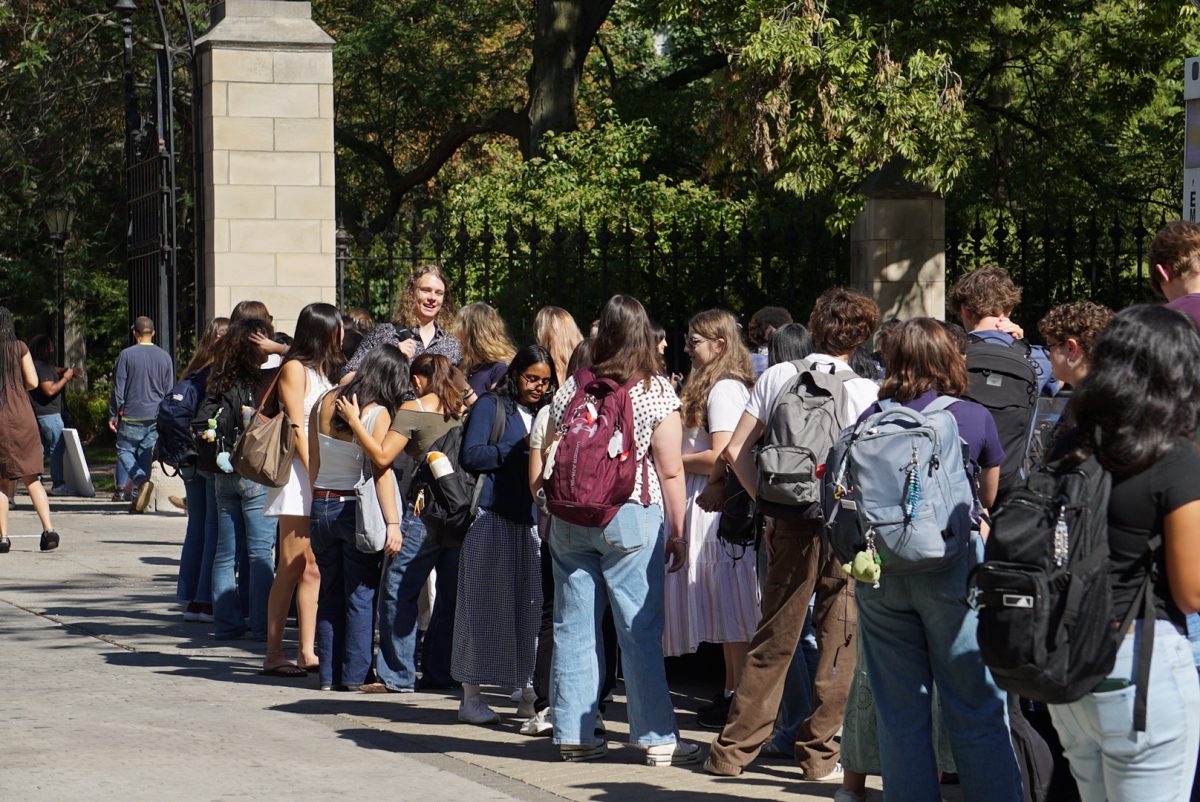When an unmarked police car signaled her friend to pull over, Alexandra Jamali didn’t know what to expect. The plainclothes officers from two cars refused to give an explanation or provide ID, prompting Jamali and her friends to become increasingly worried.
“I assumed that we were being scammed—that they were going to rob my car,” said Jamali, a second-year in the College.
Jamali, four other U of C second-years, and a friend were returning to campus on Saturday, October 15, around 11 p.m. after going to dinner when they got lost on the West Side of Chicago. Chicago Police Department (CPD) officers pulled the students over and asked if they were in the neighborhood to buy drugs.
Though the six white students suspect that the police officers behaved inappropriately and perhaps illegally because of their race, the CPD maintains that they were within bounds.
According to Pat Camden, the deputy dean of News Affairs of the CPD, the police officers are supposed to act “believing at that point a crime was about to take place.”
Camden was reluctant to comment specifically on the October 15 case because he did not have the police officers’ side of the story, but he did say that “if a call is made of suspicious people who happen to be white in that neighborhood, the police would be acting within [Chicago Police Department] guidelines.”
Poorer neighborhoods in western Chicago—like the one the six students were in on October 15—are prime drug spots, according to Camden.
“A good amount of our drug-buying personnel happen to be white kids from the suburbs,” Camden said.
Bob Mason, director of the South East Chicago Commission, confirmed that the six students would have been cause for suspicion.
“If it is an all African-American neighborhood, and there are some white people there, the police are very much aware…of drug dealing,” Mason said.
The students were driving along Ashland Avenue on the West Side of Chicago when they stopped at a Marathon gas station to fill up and get directions. According to second-year Jon Elias, a police officer later said he noticed the six white students and decided to call in for assistance, as the group seemed suspicious.
After the students had driven for between one to five minutes—according to varying reports—an unmarked police car pulled up behind them. According to Elias, when the students asked why they were being stopped, the police answered, “racial profiling.” This report was neither denied nor confirmed by the other students. The officers asked the students to get out and stand with their hands on their car.
The students asked why they were being pulled over and for identification from the officers, but “they wouldn’t even acknowledge [the students’] question,” Elias said.
This behavior is abnormal for police officers, according to Mason. “Anytime that an individual is pulled over… no real police officer is going to be offended if they’re in plainclothes and the individual asks for identification,” he said.
After about 10 minutes, one of the officers did provide a CPD badge and explained that they were being pulled over for not signaling when they turned out of the gas station. According to the students, when Elias asked repeatedly why they were being stopped, the officers handcuffed him because they said he was being “aggressive.” He was escorted into the second police car, where he stayed with another officer while his friends were being questioned. It was during this time that the officer explained to Elias that they had noticed the car of white students and were suspicious that they might be buying drugs.
After handcuffing Elias, the officers said they needed to check the students’ car to check for weapons. They searched the girls’ purses and found prescription Adderall and fake IDs, which they confiscated.
The officers also interrogated the students about why they were in the neighborhood on a Saturday night.
The students explained that they were U of C students who were lost, but the officers seemed not to believe them.
According to second-year Claire Wilcox, one of the officers said, “Smart kids don’t get lost.”
The officers made clear their suspicions that the students were in the neighborhood to buy drugs.
“[One of the officers] said that 9 times out of 10, when they see white kids in that neighborhood, it’s because they’re scoring drugs,” Elias said.
Jamali confirmed the story: “They started interrogating us, asking what white kids were doing in this neighborhood. We said we were lost. They said, ‘That’s what every white kids who’s buying drugs in this neighborhood says.’”
The entire ordeal lasted between 20 and 45 minutes, according to differing student reports, but after the officers had lectured the students about keeping fake IDs and medication without the prescription, they let the students go without writing up the incident.
According to Richard McAdams, a professor in the U of C Law School whose specializations include race discrimination and criminal law, the case could bring up two Constitutional amendments—the fourth, which requires that search and seizures be made under reasonable suspicion of guilt, and the Fourteenth, which guarantees equal protection under the law.
McAdams said that, in terms of the Fourth Amendment, he guessed a court would rule that, as long as the students did in fact turn without signaling, the officers would be justified in pulling them over, regardless of any ulterior motives.
It is the Fourteenth Amendment that prompts more questions, however. “How a court would decide this—I’m not sure,” McAdams said.
He said that the officers would probably not be guilty as long as they behaved in a consistent manner—regardless of race. For example, the officers would have to pull over a Hispanic man in a predominantly white neighborhood if there were a similar trend.
“I think it is an example of racial profiling. Though it might be that the police are right that, when white people are in certain neighborhoods, they’re usually trying to buy drugs,” McAdams said.








